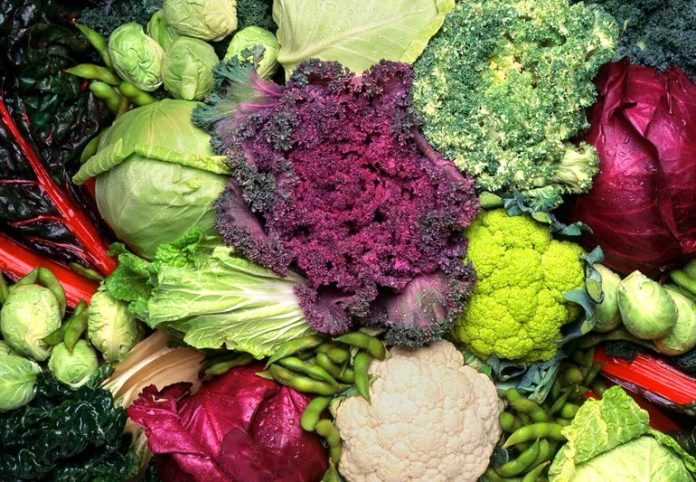Cruciferous vegetables, a diverse group of nutrient-dense plants, are celebrated for their exceptional health benefits and versatility in the kitchen. Known for their unique flavors and high nutritional value, these vegetables belong to the Brassicaceae family and include familiar staples such as broccoli, cauliflower, and Brussels sprouts. This article delves into what cruciferous vegetables are, their various types, the health benefits they offer, and how they can be incorporated into your diet.
Understanding Cruciferous Vegetables
Cruciferous vegetables, also known as Brassica vegetables, are characterized by their cross-shaped flower petals, which is reflected in the name “cruciferous,” derived from the Latin word “cruciferae,” meaning “cross-bearing.” These vegetables are not only recognized for their distinctive appearance but also for their impressive nutritional profiles and potential health benefits.
Common Types of Cruciferous Vegetables
- Broccoli (Brassica oleracea var. italica)
A popular and versatile vegetable, broccoli is known for its high vitamin C and fiber content. It also contains a compound called sulforaphane, which has been studied for its potential cancer-fighting properties. - Cauliflower (Brassica oleracea var. botrytis)
Cauliflower is valued for its mild flavor and adaptability in recipes. It is a good source of vitamins C and K and provides a decent amount of fiber and antioxidants. - Brussels Sprouts (Brassica oleracea var. gemmifera)
Resembling miniature cabbages, Brussels sprouts are rich in vitamins K and C, folate, and fiber. They are known for their strong flavor, which can be enhanced through roasting or steaming. - Cabbage (Brassica oleracea var. capitata)
Cabbage comes in various forms, including green, red, and Savoy. It is a versatile vegetable used in a wide range of dishes and is a good source of vitamins C and K, fiber, and antioxidants. - Kale (Brassica oleracea var. sabellica)
Kale is a nutrient powerhouse, packed with vitamins A, C, and K, as well as calcium and iron. Its robust flavor and texture make it a popular choice for salads and smoothies. - Radishes (Raphanus sativus)
Radishes are known for their peppery flavor and crunchy texture. They are low in calories and provide vitamin C, fiber, and various antioxidants. - Turnips (Brassica rapa)
Turnips have a slightly sweet and peppery flavor. They are rich in vitamins C and K, as well as fiber and antioxidants. - Rutabagas (Brassica napus)
Similar to turnips but larger and sweeter, rutabagas are a good source of vitamins C and K, fiber, and antioxidants.
Health Benefits of Cruciferous Vegetables
- Rich in Essential Nutrients
Cruciferous vegetables are loaded with essential vitamins and minerals. For example, vitamin C supports immune function, vitamin K is crucial for blood clotting, and fiber aids in digestive health. - Antioxidant Properties
These vegetables contain various antioxidants, such as sulforaphane, indole-3-carbinol, and glucosinolates. These compounds help neutralize free radicals, potentially reducing the risk of chronic diseases like cancer. - Anti-Inflammatory Effects
The compounds found in cruciferous vegetables may help reduce inflammation in the body. Chronic inflammation is linked to numerous health issues, including cardiovascular disease and arthritis. - Supports Detoxification
Cruciferous vegetables aid in the body’s natural detoxification processes. The glucosinolates they contain are converted into active compounds that support liver function and help eliminate toxins. - Potential Cancer Prevention
Research has suggested that regular consumption of cruciferous vegetables may be associated with a reduced risk of certain cancers, particularly those of the digestive tract. The bioactive compounds in these vegetables are believed to have protective effects.
Culinary Uses and Preparation Tips
- Salads
Kale and shredded cabbage make excellent bases for hearty salads. Adding raw Brussels sprouts or radishes can provide a crunchy texture and additional flavor. - Soups and Stews
Broccoli and cauliflower can be added to soups and stews for added nutrition and flavor. They can also be pureed into creamy soups. - Roasting
Roasting cruciferous vegetables, such as Brussels sprouts, cauliflower, and turnips, enhances their natural sweetness and develops a delicious, caramelized flavor. - Stir-Fries
These vegetables are perfect for quick stir-fries. Combining broccoli, bell peppers, and onions with a flavorful sauce can make a nutritious and satisfying meal. - Smoothies
Kale can be blended into smoothies for an extra nutrient boost. Its strong flavor pairs well with fruits like bananas and berries.
Cruciferous vegetables are a vital component of a healthy diet, offering a wealth of nutrients and health benefits. Their diverse types and culinary versatility make them easy to incorporate into various dishes. By including these vegetables in your meals, you can enjoy their flavorful contributions while supporting your overall health. As with any dietary component, moderation and variety are key. If you have specific health conditions or dietary concerns, consulting with a healthcare professional can provide personalized advice on incorporating cruciferous vegetables into your diet.















